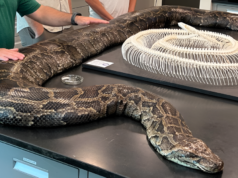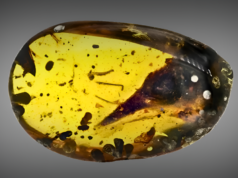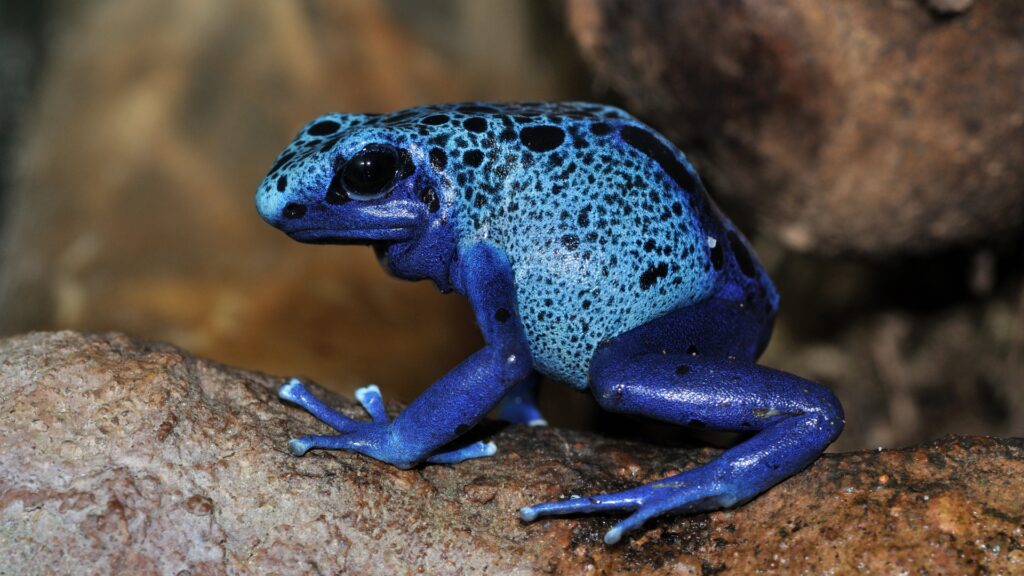
Nature’s artistry is both stunning and deadly, especially when it comes to some of the world’s most vibrant amphibians. Poisonous frogs captivate with their dazzling colors and intricate patterns, a deceptive beauty designed to ward off predators. But beneath their vivid exteriors lies a formidable defense: potent toxins capable of harming or killing larger animals, including humans. These are twelve gorgeous yet lethally poisonous frogs that you should fear.
1. Golden Poison Dart Frog

The golden poison dart frog is considered one of the most toxic animals on Earth. A single frog contains enough batrachotoxin to kill 10-20 adult humans or up to 10,000 mice. This tiny frog, measuring only about 2 inches long, packs an incredibly potent punch. Its bright yellow coloration serves as a warning to predators. Interestingly, it is believed that the frog acquires its batrachotoxin from its diet of small insects in the wild.
2. Blue Poison Dart Frog
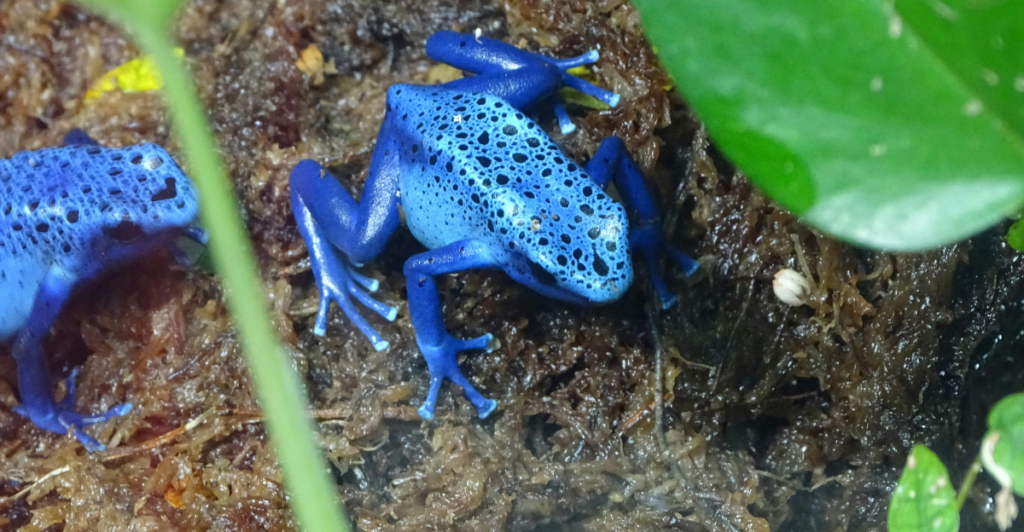
With its stunning royal blue coloration and black spots, the blue poison dart frog is beautiful and deadly. Each frog has a unique pattern of spots, like a fingerprint. These frogs are native to the forests of Suriname and measure only about 1.2 to 2 inches in length. In the wild, their skin secretes powerful toxins, but captive-bred specimens lose this toxicity due to a different diet. Despite their small size, they are quite territorial and aggressive, with females even fighting each other during mating season.
3. Black-Legged Poison Dart Frog
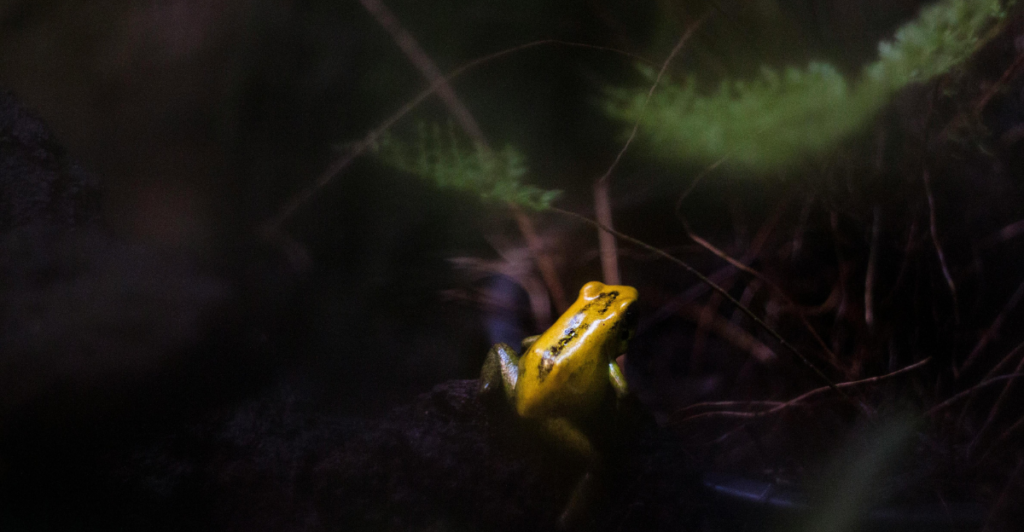
Also known as the bicolored dart frog, this species is the second most toxic poison dart frog. It has a vibrant yellow body with black legs, making it easily recognizable. Just 150 micrograms of its poison is enough to kill a person. Like other poison dart frogs, it loses its toxicity in captivity. These frogs are diurnal and move around freely during the day, with almost no natural predators due to their toxicity. They can live up to 20 years.
4. Strawberry Poison Dart Frog
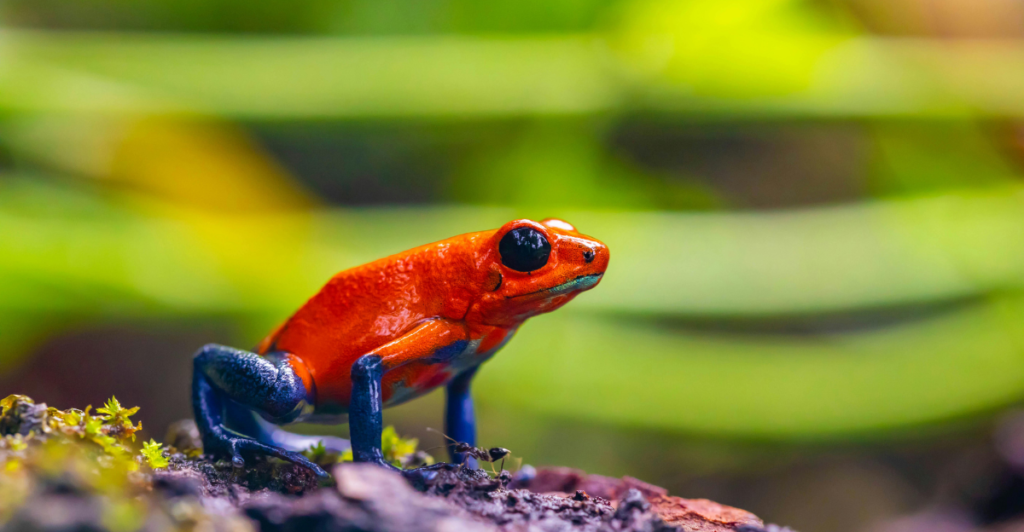
This tiny frog comes in various color morphs but is often bright red with blue legs. Its scientific name, Oophaga pumilio, means “egg-eater” in Greek, referring to the tadpoles’ diet of unfertilized eggs provided by the mother. These frogs are known for their complex parental care, with males guarding eggs and females feeding tadpoles. They’re found in Central American rainforests and display remarkable color polymorphism, with different populations having distinct color patterns.
5. Dyeing Poison Dart Frog
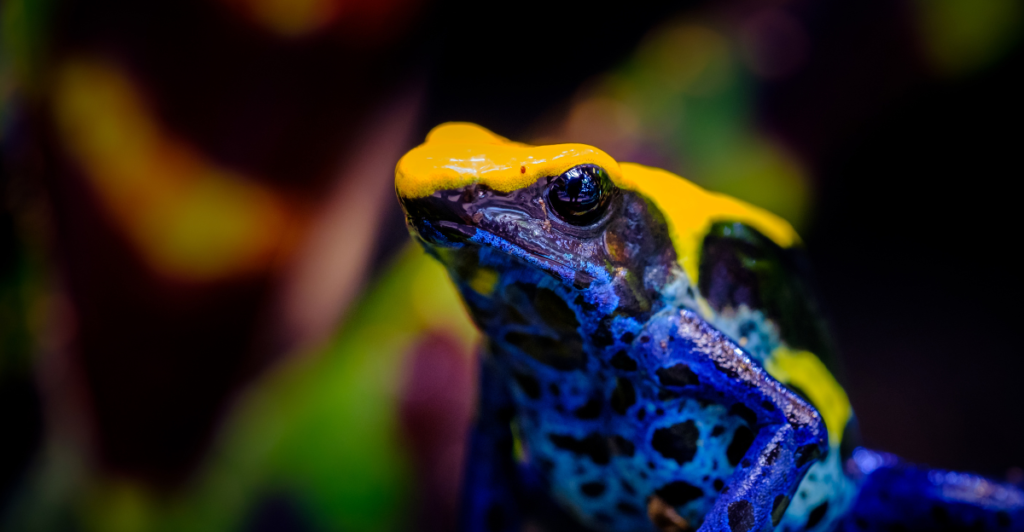
Named for its use by indigenous people to dye feathers, this frog has intricate patterns of yellow, blue, and black. It’s one of the most variably colored poison dart frogs, with some morphs almost entirely blue, yellow, or white. These frogs are found in the Guiana Shield region of South America. They’re known for their parental care, with males guarding eggs and transporting tadpoles to water. In captivity, they can live over 10 years.
6. Phantasmal Poison Frog
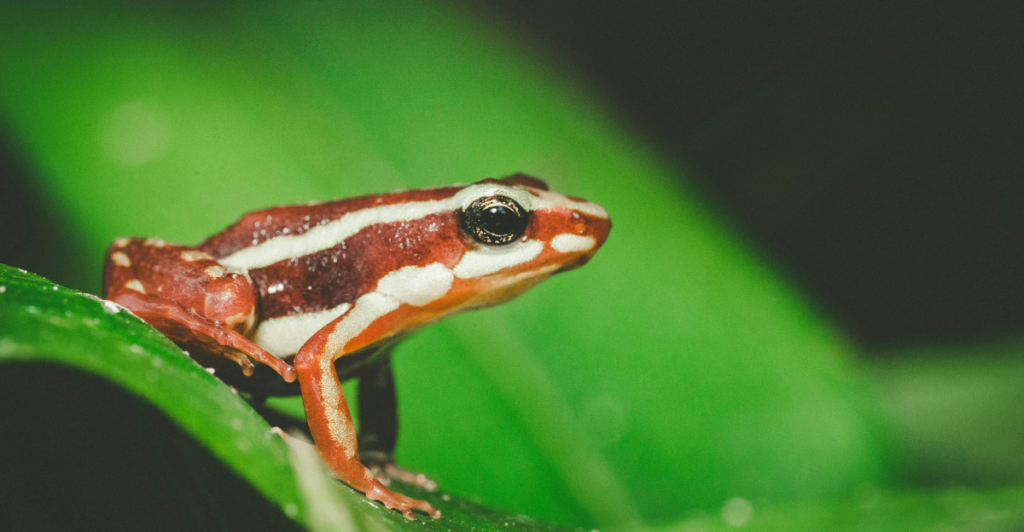
This small frog has a reddish-orange body with striking black markings. Native to Ecuador, it’s considered endangered due to habitat loss. The phantasmal poison frog has gained scientific interest due to epibatidine, a compound found in its skin that’s more potent than morphine as a painkiller. This species is diurnal and primarily terrestrial, found in tropical forests. Males care for the eggs and transport tadpoles to water sources.
7. Kokoe Poison Dart Frog
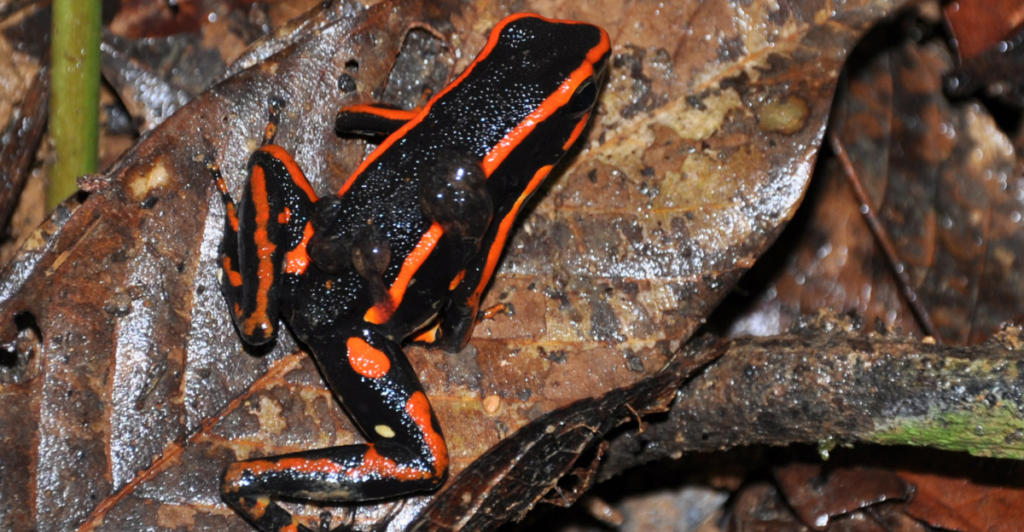
The third most toxic of all poison dart frogs, this species has a golden-yellow body with black stripes. It’s found in the Chocó region of Colombia. Like other Phyllobates species, its potent toxins were used on blowgun darts by indigenous people. These frogs are diurnal and primarily terrestrial, living in lowland rainforests. They’re known for their complex vocalizations and territorial behavior.
8. Green and Black Poison Dart Frog
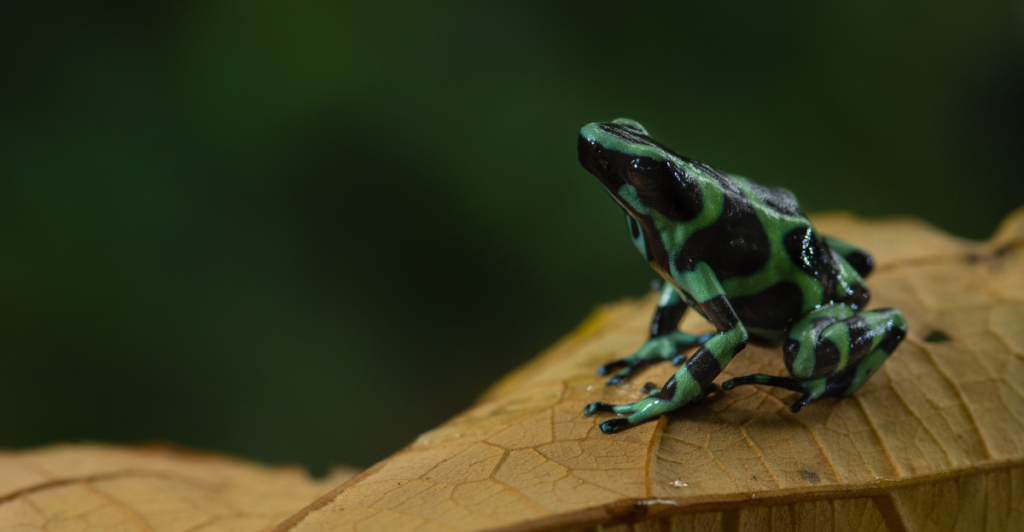
This frog’s vibrant green and black patterning serves as a warning to predators. It’s one of the most widely distributed poison dart frogs, found from Nicaragua to Colombia. In captivity, these frogs can live for over 10 years. They’re known for their parental care, with males guarding eggs and transporting tadpoles. Interestingly, when kept in captivity, they lose their toxicity.
9. Splash-Backed Poison Frog
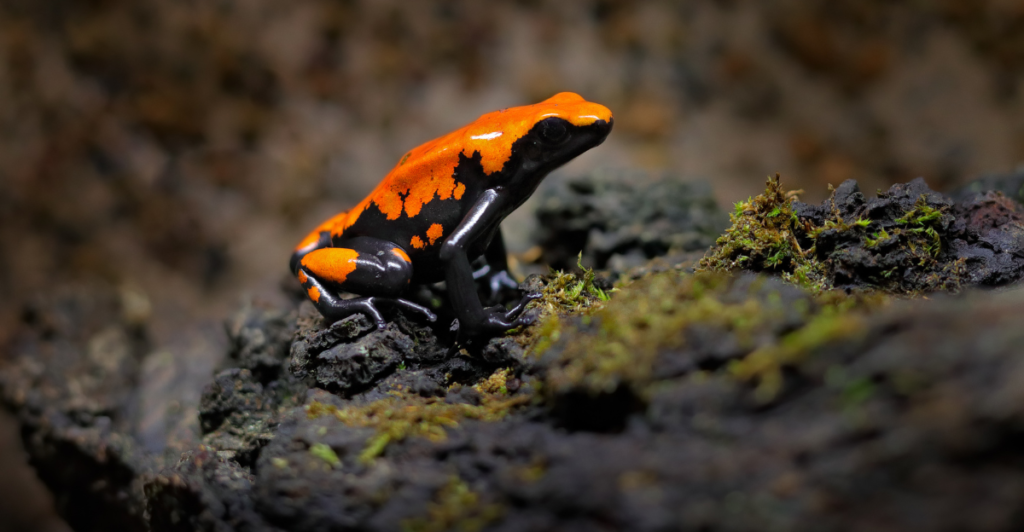
With its bright orange body and blue-black limbs, this frog is a striking sight. Native to the Amazon rainforest in Brazil, it comes in various color morphs, including yellow, red, and even white (known as “moonshine” in the pet trade). These frogs are diurnal and primarily terrestrial. They’re known for their parental care, with males transporting tadpoles to water sources.
10. Harlequin Poison Frog
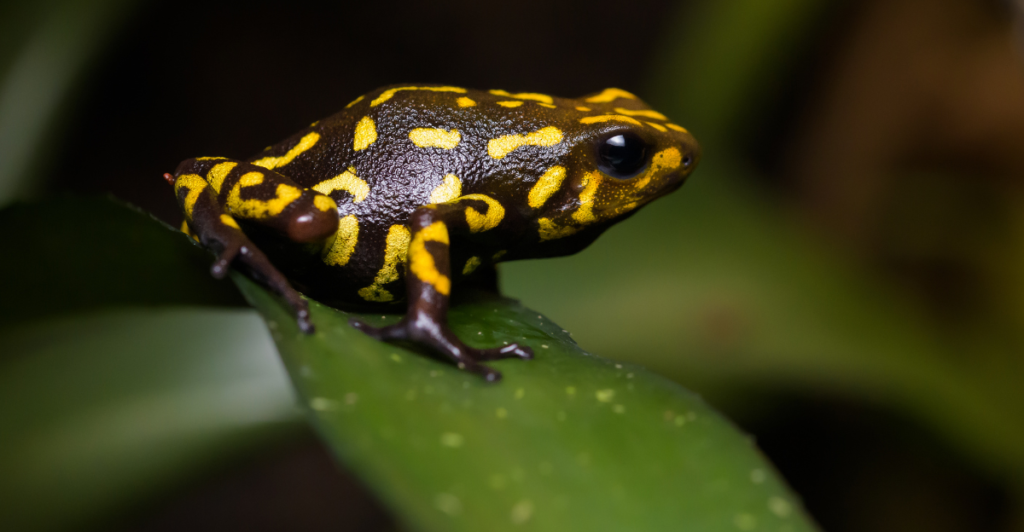
This frog’s intricate patterns of orange, yellow, and black make it look like a living jewel. Native to Colombia, it’s critically endangered due to habitat loss and collection for the pet trade. These frogs are known for their complex parental care, with females feeding tadpoles unfertilized eggs. They produce potent cardiotoxins known as histrionicotoxins.
11. Zimmermann’s Poison Frog
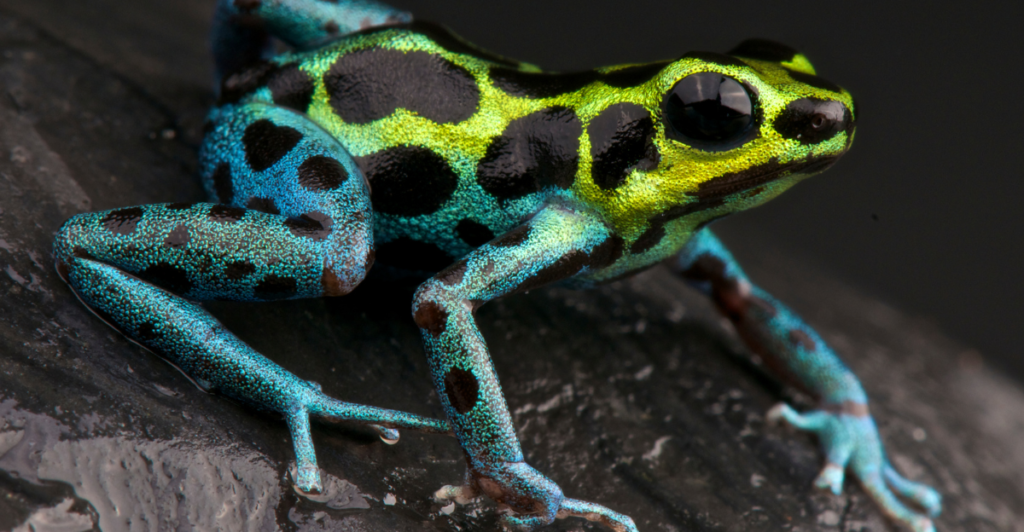
Also known as the variable poison frog, this species comes in various color morphs. Found in Colombia, Ecuador, and Peru, these tiny frogs measure only about 17-18 mm long. They’re known for their complex reproductive behavior, with males caring for eggs and transporting tadpoles. In captivity, they lose their toxicity due to a different diet.
12. Demonic Poison Frog
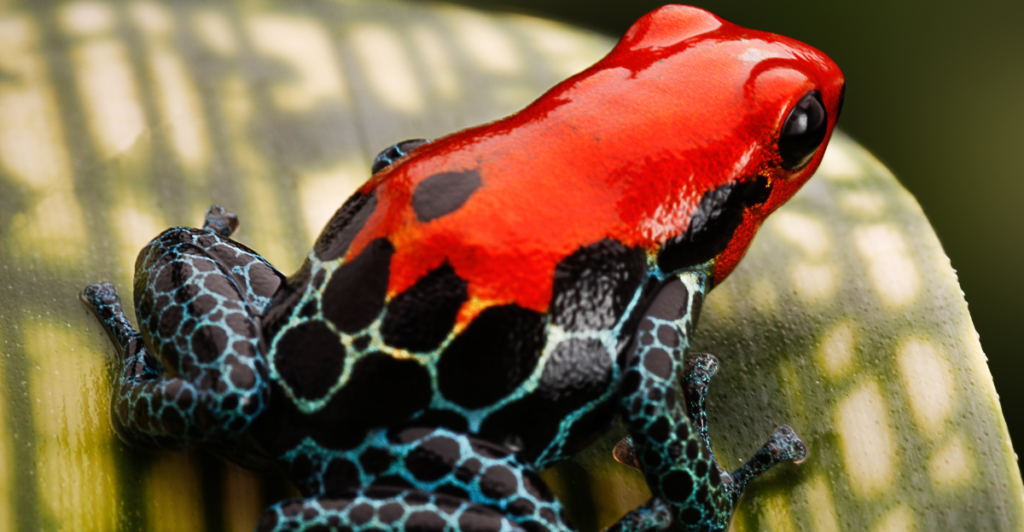
This critically endangered frog is found only in a small area of Venezuela. Its vivid red coloration warns of its highly toxic skin secretions. Very little is known about this species due to its limited range and the difficulty of studying it in its natural habitat. It’s considered one of the most threatened poison dart frogs due to its extremely limited distribution.
Discover more of our trending stories and follow us to keep them appearing in your feed

Dormant for 800 Years, This American Volcano Is Waking Up
Meet the Massive Crocodiles That Make Their Homes 40 Feet Underground
12 Facts About the Devil Frog
Newly Discovered Tiny Frog in Brazil Challenges Our Understanding of Size Limits in Nature
Stay connected with us for more stories like this! Follow us to get the latest updates or hit the Follow button at the top of this article, and let us know what you think by leaving your feedback below. We’d love to hear from you!


